
COME WINTER AND Delhiites get trapped in an unhealthy, suffocating atmosphere with dangerously high levels of air pollution. In some places of Delhi-NCR (National Capital Region), the Air Quality Index touches the alarmingly high level of 1,000, as officials and politicians look for scapegoats or try to adopt strict measures to check the spiralling pollution. What is galling is that the administrations—both at the Centre and in states like Punjab, Haryana and Delhi—allow the same situation to continue year after year, putting Delhiites, particularly the elderly and children, at risk.
But they may not be entirely to blame.
Vehicular traffic, stubble burning in states like Punjab and Haryana, construction activity, small scale industries—all contribute to the growth of pollution in Delhi. However, one factor which has been least emphasised is the regular weather phenomenon of ‘inverse thermal air’. It is virtually the essential condition for the kind of high levels of pollution seen for days on end by Delhiites. It is a phenomenon that occurs when the natural flow of hot and cold air is reversed.
Denne historien er fra November 26, 2023-utgaven av THE WEEK India.
Start din 7-dagers gratis prøveperiode på Magzter GOLD for å få tilgang til tusenvis av utvalgte premiumhistorier og 9000+ magasiner og aviser.
Allerede abonnent ? Logg på
Denne historien er fra November 26, 2023-utgaven av THE WEEK India.
Start din 7-dagers gratis prøveperiode på Magzter GOLD for å få tilgang til tusenvis av utvalgte premiumhistorier og 9000+ magasiner og aviser.
Allerede abonnent? Logg på

Constipation Can Put Your Heart At Risk
PEOPLE WITH CONSTIPATION have an increased risk of major cardiac events, including heart attack, stroke and heart failure, especially if they also have high blood pressure, finds an international study published in the American Journal of Physiology-Heart and Circulatory Physiology.

Too Much Sitting Can Accelerate Ageing
SITTING FOR EXTENDED PERIODS can harm the heart and accelerate ageing, even if you are young and get the minimum recommended amount of daily exercise, according to a US study published in the journal PLOS One.
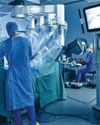
Efficiency and innovation
As health care evolves, professionals must employ innovative methods to refine their skills

Level up
Only 30 per cent of needy patients are able to undergo transplant in India; we need more dedicated transplant centres
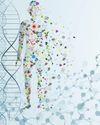
HOPE STEMS FROM A CELL
While stem cell therapies have shown success in treating blood disorders, orthopaedic ailments, autoimmune diseases and eye issues, there is hope that they can one day treat patients with heart disease, blindness, Parkinson's, HIV, diabetes and spinal cord injuries
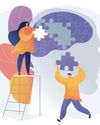
Mind matters
Your mindset can limit or expand your physical ability

Cutting edge
Would you go under the knife if a robot was the one holding it? Or would you say, \"No way, I need a human touch\"? You might have to decide soon because a robot that can imitate skilled human surgeons is already here.
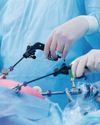
The smallest cut
Minimally invasive surgeries have a bright future, with virtual reality and 3D procedures offering greater precision and AI on the horizon
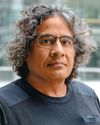
Signalling a revolution
Canadian scientist and entrepreneur Sachdev Sidhu is focused on bringing cutting-edge antibody engineering to his country of origin

Wellness on demand
Starting as a doctor-patient chat platform, Medibuddy has evolved to be India's largest on-demand, full-stack digital health care platform